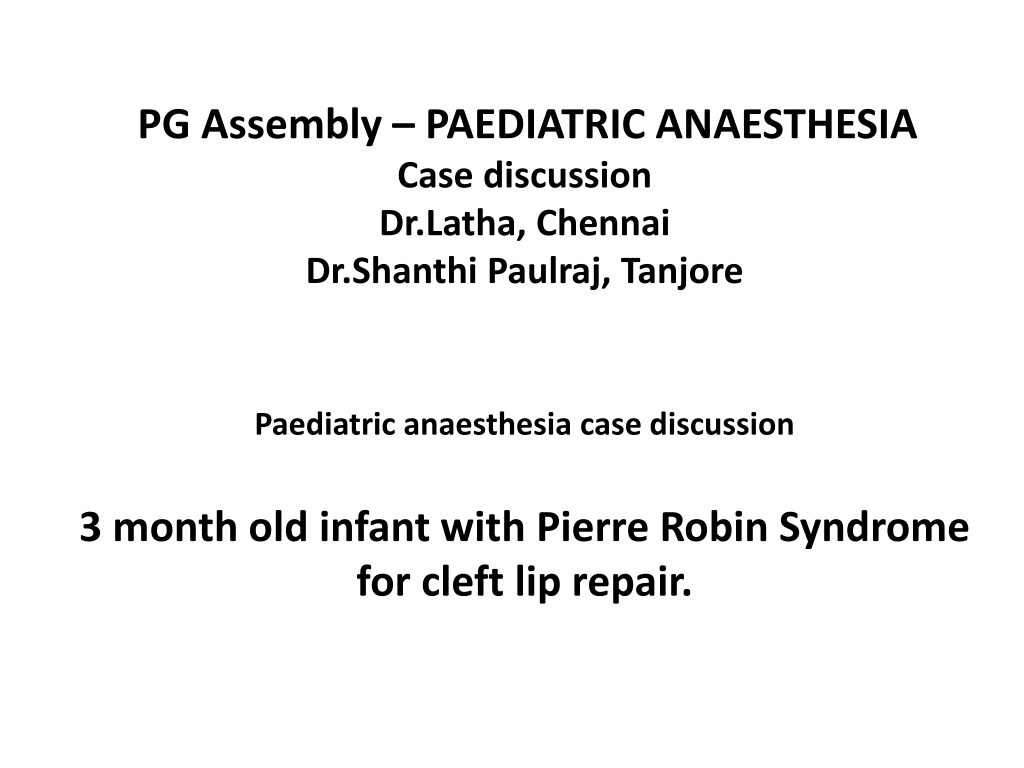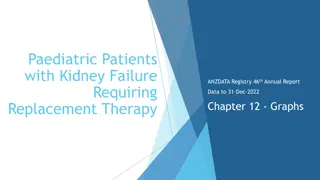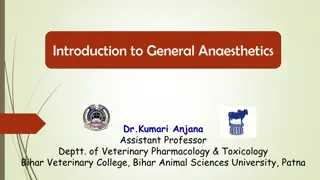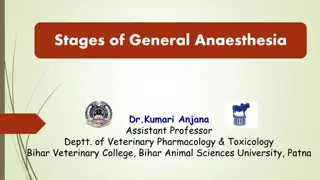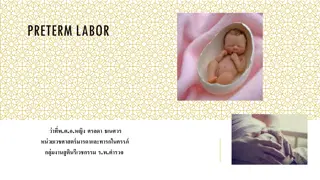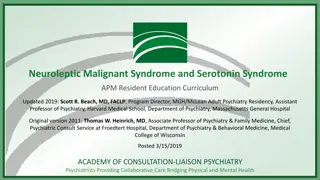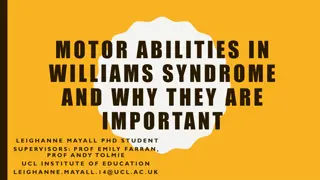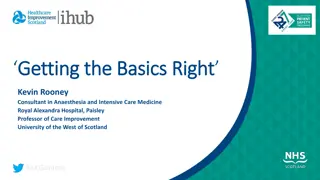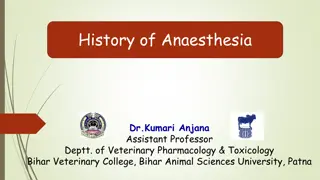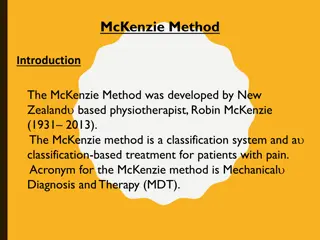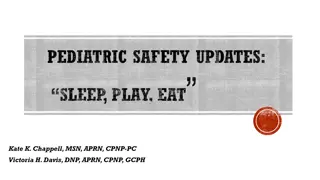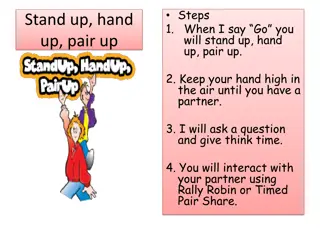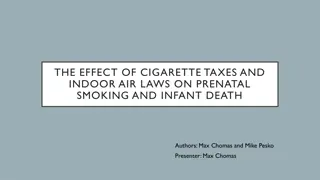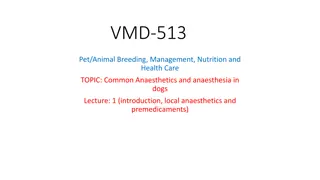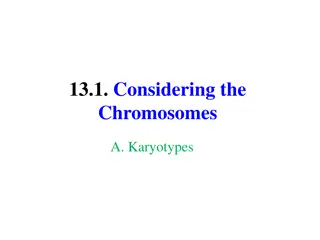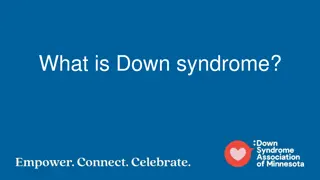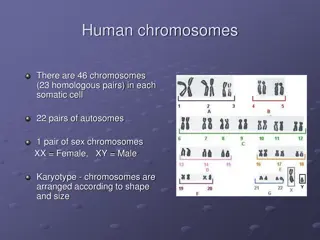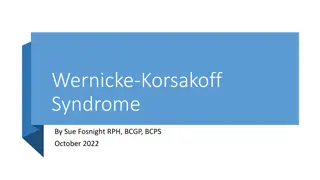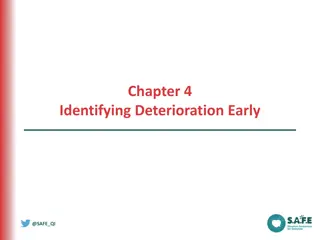Paediatric Anaesthesia Case Discussion: Challenges of Anaesthetizing an Infant with Pierre Robin Syndrome
Pierre Robin Syndrome (PRS) presents challenges in paediatric anaesthesia, especially in infants undergoing procedures like cleft lip repair. PRS is characterized by micrognathia, glossoptosis, and respiratory distress. Other syndromes associated with cleft lip include Treacher Collins syndrome, Goldenhar syndrome, Down syndrome, and Klippel Feil syndrome. Evaluating for a difficult airway in infants with PRS involves looking for respiratory obstruction history, craniofacial deformities, and physical examination of mouth, tongue, mandible, and palate. Managing anaesthesia for PRS infants requires careful attention to airway management and monitoring. Primary lip repair is typically done around 3 months of age.
Download Presentation

Please find below an Image/Link to download the presentation.
The content on the website is provided AS IS for your information and personal use only. It may not be sold, licensed, or shared on other websites without obtaining consent from the author. Download presentation by click this link. If you encounter any issues during the download, it is possible that the publisher has removed the file from their server.
E N D
Presentation Transcript
PG Assembly PAEDIATRIC ANAESTHESIA Case discussion Dr.Latha, Chennai Dr.Shanthi Paulraj, Tanjore Paediatric anaesthesia case discussion 3 month old infant with Pierre Robin Syndrome for cleft lip repair.
What are the components of Pierre Robin Syndrome (PR)?
a)Micrognathia b)Glossoptosis c) Respiratory distress in the first 24 to 48hours
What are the other syndromes associated with cleft lip?
Syndromes associated with cleft lip are Treacher Collins syndrome Goldenhar s syndrome Down syndrome Klippel Feil syndrome
How will you evaluate for difficult airway in infants?
a)H/o respiratory obstruction like noisy breathing, stridor. b) Physical examination cranio facial deformities i) Size of mouth and tongue, ii) Size and configuration of mandible iii) Size and configuration of palate iv) Asymmetry of face v) Other cranial facial deformities
What are the challenges in anesthetizing a child with Pierre Robin Syndrome?
i. Difficult airway due to Micrognathia and Glossoptosis ii. Awake intubation technique cannot be done in paediatric age group iii. FOB guided intubation in infant needs highest experience and expertise iv. Airway obstruction during induction and post op make cause severe hypoxemia.
What are the most important monitors you will use in this case ?
1.SpO2 2.Precordial stethoscope 3.ECG 4.Temperature
What are the goals in anesthetizing this child with PR syndrome?
Maintain spontaneous ventilation till airway secured Avoid airway obstruction and hypoxia
Why is the infant more prone for airway obstruction?
Short neck and chin that meets the chest at the level of 2nd rib
How will you assess the blood loss ? What is the fluid of choice ? When will you replace blood ?
Weight. Approximately 10 pounds for lip surgery Hemoglobin. 10 g or more Age for surgery. at 10 weeks for lip
No need for any sedative premedication in infants
How will you induce the child with PR syndrome?
Why are the paediatric age groups more prone for hypoxia ?
What difficulty will you experience in a child with Micrognathia?
Difficult Laryngoscopy in infants below 6 months due to proximity of tongue to superior larynx causing acute angle between the tongue and glottis (90 )
What is Glossoptosis and its anaesthetic significance?
Glossoptosis is a condition in which base of tongue is positioned more caudally. Anaesthetic significance is difficult visualization of glottis
Miller (straight) blade. i. Allows cephalad aspect of larynx to be exposed more easily, ii. Base of tongue lifted out of line of sight and iii. Protruding epiglottis lifted with tip.
What are the techniques used to visualize the glottis in this case?
Optimal External laryngeal manipulation (OLEM) and Tongue suturing to mandible in post natal period
What are the options available for difficult intubation in this case?
Options available are i. Inhalational induction followed by intubation, ii. Intubation guides metal stylets and gum elastic boogie iii. Oxyscope iv. Paediatric FOB (ultrathin) guided intubation, v. LMA as a conduit for FOB intubation.
What are the available techniques for inhalation induction?
Three techniques with sevoflurane induction i. Incremental increase in sevoflurane (2%, 4 %, 6%, 8%) ii. High concentration of sevoflurane (8%) in O2, and iii. High concentration of sevoflurane in the 1:1 mixture of N2O and O2
What are the possible complications during inhalation induction?
i. Due to abnormal facial anatomy improper mask fit can occur ii. Breath holding iii. Airway obstruction iv. Laryngospasm.
How will you overcome airway obstruction during induction?
i. Insertion of appropriate size oropharyngeal and nasopharyngeal airway at adequate plane of anaesthesia ii. CPAP of 5 to 10cmH2O to keep airway patent.
What are the techniques that can be used with straight blade in an infant with difficult airway?
i. Retromolar approach, ii. Paraglossal approach and iii. Lateral approach
